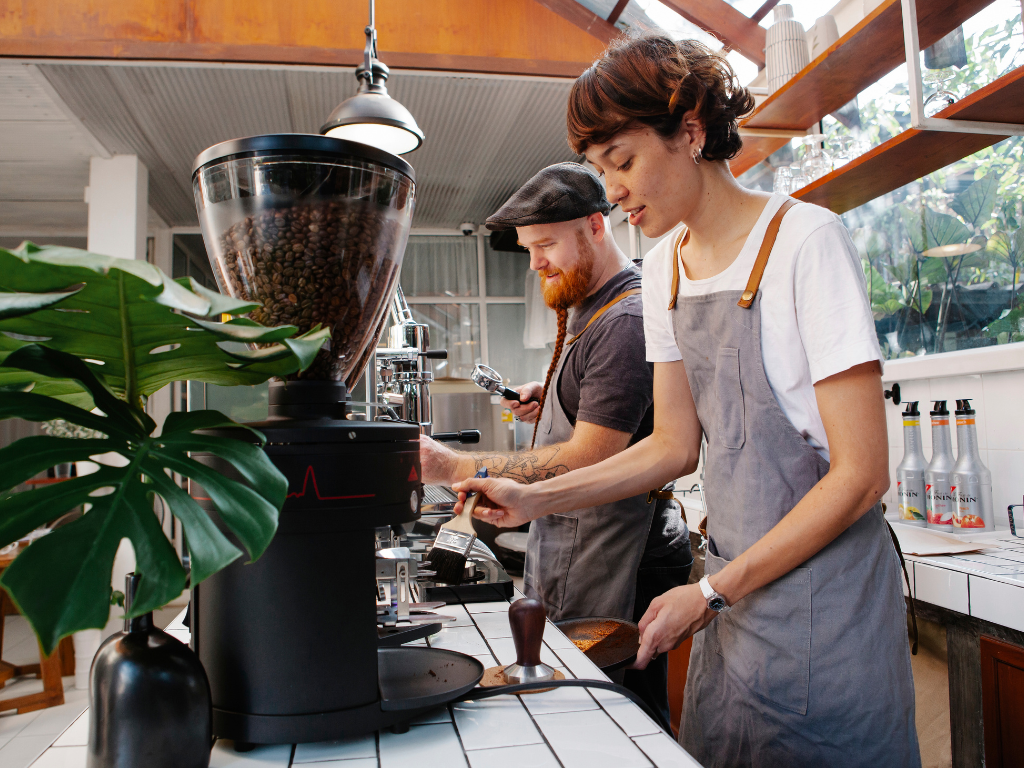For most people, coffee is a comforting ritual—a morning routine, a mid-afternoon pick-me-up, or a shared experience with friends. But behind every cup is a complex world of chemistry, physics, and biology. Brewing coffee isn’t just about hot water and ground beans; it’s a controlled extraction process, where tiny adjustments can make a massive difference in taste, aroma, and texture.
In this article, we’ll dive into the science behind brewing coffee, exploring how water, temperature, time, and grind size interact with the compounds in coffee beans to create the drink we love.
What is coffee, chemically speaking?
Coffee beans are seeds of the Coffea plant, roasted to unlock the complex compounds that give coffee its aroma and taste. A roasted coffee bean contains over 1,000 chemical compounds, including:
- Caffeine – a natural stimulant
- Chlorogenic acids – antioxidants that break down during roasting
- Lipids – oils that contribute to body and crema
- Carbohydrates – some caramelize during roasting
- Melanoidins – responsible for color and some bitterness
- Volatile aroma compounds – create complex flavors
When you grind and brew coffee, you’re triggering a chemical extraction process that dissolves these compounds into water.
The role of water in coffee extraction
Water is the universal solvent in brewing. As it moves through the coffee grounds, it dissolves soluble compounds and carries them into your cup.
Coffee extraction follows a typical pattern:
- Acids are extracted first (bright, citrusy notes)
- Sugars follow (sweetness, balance)
- Bitters and heavier compounds come last
The goal of good brewing is to balance extraction—you want enough acids and sugars, but not too much bitterness.
Ideal extraction happens when 18–22% of the coffee’s mass is dissolved into water. This is referred to as Extraction Yield.
If you extract too little (under-extraction), coffee tastes sour or salty.
If you extract too much (over-extraction), it becomes bitter and astringent.
The importance of grind size
Grind size directly affects how fast water can pass through coffee and how much is extracted:
- Finer grinds = more surface area = faster extraction = stronger flavor
- Coarser grinds = slower extraction = milder flavor
But too fine, and water flows too slowly or becomes blocked. Too coarse, and the water flows too fast, under-extracting the coffee.
Each brew method has its ideal grind size:
- Espresso: fine
- Pour-over: medium-fine
- French press: coarse
- Cold brew: extra coarse
The right grind ensures optimal extraction time and flavor balance.
Water temperature and its effect on flavor
Hotter water extracts compounds faster, but extreme heat can over-extract bitter elements or scald delicate flavors.
- Ideal brewing temperature is 195–205°F (90–96°C)
- Below 195°F = under-extracted, weak, or sour
- Above 205°F = harsh or bitter
If your water isn’t hot enough (common in basic kettles or automatic machines), the brew will suffer.
Pro tip: Let boiling water rest for 30–45 seconds before pouring for manual methods like pour-over or French press.
Brew time: how long is long enough?
Contact time—how long the water stays in contact with the grounds—must be adjusted based on the brew method and grind size.
Too short = under-extracted
Too long = over-extracted
Typical brew times:
- Espresso: 25–30 seconds
- Pour-over: 2.5–4 minutes
- French press: 4 minutes
- Cold brew: 12–24 hours
If your coffee tastes off, adjust time and grind together. Shorter time? Go finer. Longer time? Go coarser.
Turbulence and agitation
When you stir or swirl coffee during brewing, you create turbulence, which increases the extraction rate by allowing water to reach more surfaces.
Proper agitation helps ensure:
- Uniform extraction
- No “channeling” (where water flows unevenly)
- Better saturation of the coffee bed
In methods like pour-over or AeroPress, gentle stirring or controlled pouring patterns can improve flavor clarity.
Ratio: the science of strength and concentration
The brew ratio refers to how much coffee is used relative to water. It directly impacts strength and flavor.
Typical ratios:
- 1:15 = stronger brew
- 1:16 or 1:17 = balanced
- 1:18+ = lighter brew
Measure both water and coffee by weight for accuracy. A digital scale helps you stay consistent and repeat successful brews.
Coffee bloom and CO₂ release
Freshly roasted coffee contains carbon dioxide trapped inside the bean. When you add hot water, the gas escapes in a process called the bloom.
Why it matters:
- CO₂ repels water, preventing even extraction if not released
- Blooming allows full saturation
- Skipping the bloom can result in sour, inconsistent cups
In manual methods, pour a small amount of water (2–3x coffee weight), wait 30–45 seconds, then continue brewing.
Roast level and solubility
Roast level affects how easily coffee compounds dissolve in water:
- Light roast = less soluble, requires higher temperature and longer brew
- Dark roast = more soluble, extracts quickly but can over-extract easily
That’s why dark roasts taste bold even with short brews, while light roasts may need fine tuning to avoid under-extraction.
TDS and extraction yield
For those who want to geek out:
- TDS (Total Dissolved Solids) = measures the strength of your coffee (higher TDS = stronger)
- Extraction Yield = percentage of coffee dissolved (ideal range: 18–22%)
You can measure both with a coffee refractometer, but most home brewers use taste as their guide.
Well-balanced coffee should taste:
- Sweet and clean
- Aromatic and layered
- Neither sour nor overly bitter
Final thoughts: brewing is science in your kitchen
Every cup of coffee is a balance of chemistry and craft. From grind size and water temperature to brew time and agitation, each step affects how flavor is extracted from the bean.
Understanding the science helps you take control of your brew—and once you do, you’ll never settle for a mediocre cup again.
With knowledge, precision, and a little experimentation, your home coffee will taste better than ever.
